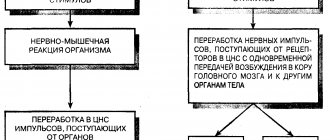Professional self-determination is a conscious choice of the direction of work activity. It is important that it is carried out with an understanding of responsibility for the implementation of the intended path. Choosing a profession is a dynamic and multi-stage process. To make work an enjoyable part of life, you should regularly analyze your actions and results. If subtotals signal that it is time for change, they cannot be ignored.
You should not rush to interpret the feeling of the need to change your field of activity as your own weakness or temporary whim. Living conditions change from time to time. We reflect, reconsider goals - all these are integral components of a fulfilling life.
The essence of professional self-determination
A professor at the Faculty of Psychology of Moscow State University managed to succinctly define the foundations of professional self-determination. N. Lomonosov to S. Pryazhnikov. In his understanding, they represent a search for personal meaning in the chosen and mastered specialty. This once again emphasizes that without a favorite thing in life it is difficult to develop holistically.
Professional self-determination has a number of functions:
- Holistic awareness of individual mental and physical characteristics.
- Analysis and knowledge of one’s personal characteristics (personality psychology).
- Acceptance of the current socio-economic living conditions.
- Studying different types of activities, comparing them, choosing a place in society.
- Mastering your chosen profession. Formation of subjective criteria for assessing oneself as a specialist.
It is also important to study the structure of professional self-determination. There are many theoretical variations of it, but in practice it is often customary to use the development of E. A. Klimov based on the ideas of the outstanding Soviet psychologist S. L. Rubinstein. This model of professional self-determination allows us to decompose the process into three planes and clearly demonstrate the value of successful career guidance, as well as its dependence on personality characteristics.
It includes the following components:
- "Can". This part reflects inclinations, abilities, skills, abilities, character traits and behavior.
- "Want". Includes desires, internal needs, motives, values and ideals.
There is also “Should”. These are external requirements determined by social trends and put forward to a person.
Professional self-determination of students
A person first gets acquainted with work in preschool age. Developing motor coordination and fine motor skills requires a lot of effort from kids. Gradually they realize that to achieve what they want they need to take action.
Theories of self-orientation
A variety of approaches to studying the issue of professional self-determination has emerged due to social, cultural and historical differences between countries. Therefore, it is impossible to identify the only correct theory for choosing a future field.
Markova theory
The author of the psychological method of working self-determination, Aelita Markova, presents self-orientation as a process of determining and achieving the qualities necessary for becoming a professional.
The doctor of sciences divides the essence of labor education into three criteria:
- obtaining knowledge and skills that shape the employee’s worldview;
- interaction between student and teacher;
- the desire and actions of the employee to master the profession.
Markova identifies 5 levels of improvement in specific activities:
- pre-professionalism (does not have skills);
- professionalism (stable work, compliance with requirements and performance standards);
- super-professionalism (the limit of development of achievements, creative development of personality);
- post-professionalism (does not work in the present, but achieved success earlier, becomes a mentor for less experienced workers).
The psychologist identifies a separate category, unprofessionalism, which is characterized by vigorous activity, which leads to incorrect work or degradation of the employee’s personality.
Super's theory
According to the concept of the American psychologist, personal professional self-determination and types of thinking when choosing a career must be considered as expressions of the self-concept (or ego theory, according to Freud’s tripartite structure of consciousness).
A theory is represented by each statement that a person seeks to tell. The subject's statements determine the personal working self-concept.
Professional self-determination according to Super can be achieved by analyzing several places of work (types of activity) according to the degree of attractiveness for a particular person.
A person chooses a profession that corresponds to his idea of his own “I” and allows him to develop without damaging the Ego.
Holland's theory
Holland's theory indicates that each individual's abilities allow for only one calling. Professional choice is a conscious and rational process when a person, a high school student, independently identifies strengths and correlates them with the requirements of various professions.
Holland proposed a classification of personality types into six groups; the typology is popular among school graduates to determine a suitable profession.
Types of thinking:
- Realist. They prefer orderly work and love activities related to technology and tools. They have difficulty communicating, so they avoid social work that requires communication with others. Characteristics: persistence, practicality.
- Researcher. A person who prefers to explore the world through creativity. They value a scientific approach to activity and avoid professions related to commerce and social events. They have high intelligence, but lack leadership qualities. Features: restraint, tendency to analytical thinking, curiosity.
- Artist. They prefer unorganized work and use various attributes to create works of art. They are considered gifted and value the aesthetic side of things. Characteristic features: impracticality, unstructured work, idealism.
- Social personality. Such people value self-development and working on themselves. They consider themselves useful subjects, capable of teaching and helping others. They prefer social activities, avoiding work that requires rationalization and a realistic view of the world. Characteristic traits: empathy, generosity, desire for communication.
- Enterprising personality. Strives for organizational activities leading to benefits. Considers himself a popular, energetic speaker, leader. There is a lack of knowledge and scientific character, so they avoid work that requires research and analysis. They value political and economic motives for actions. Characteristic traits: ambition, extroversion, optimism, sociability.
- Traditionalist. Strives for systematization and analysis, is convinced of his own analytical and mathematical abilities, and therefore avoids creative activity. Appreciates economic and business achievements. Characteristic features: inflexibility, systematicity, consciousness.
Holland presented the types described as a hexagon, the arrangement of the corners of which changes due to the preferences and abilities of the person.
Ginzburg's theory
According to this concept, the concept of professional self-determination is a set of personal values that are decisive when choosing a field of activity. The scientist devotes a special place to values that act as ideas and human goals.
The structure of professional self-determination according to Ginzburg consists of three aspects:
- motivation (formation of ideas about the future to obtain skills);
- sense-making (searching for the meaning of existence, drawing up a plan for work activities);
- implementation (planning, implementation of specific ideas).
The psychologist characterizes professional self-determination as a personal acquisition, which is associated with the formation of internal values and certain psychological aspects (self-esteem, ideal, self-affirmation).
Klimov's theory
The domestic researcher considers the issue of choosing a profession as one of the main manifestations of the mental development of an individual. Klimov considers the most significant part of self-determination to be the formation of professional self-orientation, consisting of:
- acceptance of one's own membership in a social group;
- awareness of one’s own compliance with professional requirements (or non-compliance);
- a person’s understanding of the degree of his connection with a professional group;
- forming an understanding of strengths and weaknesses, considering ways to develop working skills;
- own vision of the profession, personal growth in the chosen field.
The result of motivational analysis is the achievement of a socially significant status, the implementation of activities aimed at creating a product valuable to society.
The role of temperament and character in self-determination
Each activity places special demands on the human psyche and on the dynamic characteristics of the brain.
There is no temperament that is exclusively suitable for one profession.
Psychologists give general recommendations on activities for each type of temperament:
- for choleric people, active work with opportunities for risk is preferable;
- for a sanguine person - organizational, orderly activity;
- phlegmatic people are comfortable working systematically, with a clear schedule of the day and week;
- melancholic people will find themselves in creativity and scientific activities due to their lack of structure.
The role of temperament lies in influencing activity under various mental states that are caused by the atmosphere in the team, environment, and emotional factors.
Temperament is a set of innate behavioral characteristics of an individual that influences professional self-determination along with acquired character traits.
The following traits influence the choice of profession:
- readiness for responsibility;
- dedication;
- ability to concentrate;
- strength of will;
- discipline;
- diligence.
Psychologists argue that temperament and character traits should be taken into account when choosing a profession, as they influence a person’s inclinations, positive and negative traits. A person with a low concentration of attention will not be able to carry out long hours of operations, and a person with a low level of responsibility will not become a team leader. Personal qualities influence work processes and results.
Yevtushenko, a Russian poet who humorously ridiculed enterprising individuals, wrote the following lines:
“I believe in their holy faith.
Their faith is my courage.
I'm making a career for myself
because I don’t do it!”
Professional self-determination at a young and mature age
The formation of an individual as a professional does not end with receiving a diploma of secondary specialized or higher education. After several years of stable work in a certain field, a reassessment of meanings and goals often occurs, which may result in a change in type of activity.
In psychology, this phenomenon was studied in detail by the famous psychologist E. F. Zeer. As the founder of the scientific school of personality development in a professional educational environment, he conducted a number of interesting studies. The results of many years of work have resulted in valuable conclusions:
- At the age of 27-30, most people experience psychological discomfort associated with work. Any reason is considered valid and adequate for rethinking professional self-determination. Its results can be either a change of place of work or a radical change in occupation.
- After 30 years, as well as with the onset of maturity, scientists note the most productive age in career terms. Thanks to the accumulated experience and strengthened self-confidence, a person begins to experience “professional optimism.” Fewer and fewer tasks seem impossible to achieve.
Classification according to Klimov
The result of an individual’s professional self-determination is the decision made to choose a profession. E.A. Klimov proposed the following scheme:
- self-introduction and overview of the world of professions;
- identifying the limitations and opportunities that are associated with reality and dividing them into 3 degrees of significance: a) which must be taken into account, b) best taken into account, c) can be neglected;
- collecting data and information about the chosen specialty, including backup options, and, if necessary, re-clarification;
- thinking about options for mastering a profession;
- mental consideration of the parameters of a personal professional plan;
- final choice of profession.
Culture of professional self-determination
The public idea of professional self-determination has undergone significant changes over the past two centuries. In the 20s of the last century, it was enough to simply get a job. In the 1940s, much attention was paid to assessing personality traits. For the first time, it was noted that taking them into account helps to establish the degree of professional suitability. After the 70s, society switched to the importance of an individual approach to choosing a specialty.
Nowadays, a special area is devoted to the study of professional self-determination of specialists - career guidance activities. Its main objectives are to help and support a person in self-determination. After the results of psychological and sociological research, it is difficult to deny that the development of society directly depends on the self-realization of each person.
How to write a term paper on speech therapy
07.09.2010 198524
These guidelines are compiled to help students gain an understanding of the content and structure of coursework in speech therapy.
Logopedia of pedagogical science that studies anomalies of speech development with normal hearing, explores the manifestations, nature and mechanisms of speech disorders, develops the scientific basis for overcoming and preventing them means of special training and education.
The subject of speech therapy as a science is speech disorders and the process of training and education of persons with speech disorders.
The object of study is a person suffering from a speech disorder.
The main task of speech therapy as a science is the study, prevention and elimination of various types of speech disorders.
Coursework in speech therapy is a student's scientific and experimental research. This type of educational activity, provided for by the educational and professional program and curriculum, contributes to the acquisition of skills in working with literature, analyzing and summarizing literary sources in order to determine the range of insufficiently studied problems, determining the content and methods of experimental research, processing skills and qualitative analysis of the results obtained. The need to complete coursework in speech therapy is due to the updating of knowledge concerning the content, organization, principles, methods and techniques of speech therapy work.
As a rule, during their studies, students must write two term papers - theoretical and practical.
The first course work should be devoted to the analysis and synthesis of general and specialized literature on the chosen topic. Based on this analysis, it is necessary to justify and develop a method of ascertaining (diagnostic) experiment.
In the second course work, it is necessary to provide an analysis of the results obtained during the ascertaining experiment, as well as determine the directions and content of speech therapy work, and select adequate methods and techniques of correction.
So, let’s present the general requirements for the content and design of coursework in speech therapy.
The initial and most important stage of working on a course project is the choice of a topic, which is either proposed by the supervisor or chosen by the student independently from a list of topics that are consistent with the areas of scientific research of the department.
Each topic can be modified, considered in different aspects, but taking into account a theoretical and practical approach. Having chosen a topic, the student needs to think through in detail its specific content, areas of work, practical material, etc., which should be reflected both in the formulation of the topic and in the further construction of the study. It should be recalled that the chosen topic may not only have a purely theoretical orientation, for example: “Dysarthria. Characteristics of the defect”, “Classification of dysgraphia”, but also take into account the practical significance of the problem under consideration, for example: “Speech therapy work on speech correction for dysarthria”. It should also be taken into account that when formulating a topic, excessive detail should be avoided, for example: “Formation of prosodic components of speech in preschoolers of the sixth year of life attending a preschool institution for children with severe speech impairments.”
The course work includes such mandatory parts as: introduction, three chapters, conclusion, bibliography and appendix.
The text of the term paper begins with the title page . An example of its design can be seen here.
Then the content of the work is given, in which the names of chapters, paragraphs, and sections are formulated in strict accordance with the content of the thesis. An example of its design can be seen here.
In the text, each subsequent chapter and paragraph begins on a new page. At the end of each chapter, the materials are summarized and conclusions are formulated.
The introduction reveals the relevance of the problem under consideration in general and the topic being studied in particular; the problem, subject, object, and purpose of the study are defined. In accordance with the goal and hypothesis, objectives and a set of research methods aimed at achieving the objectives must be defined.
The relevance of the topic lies in reflecting the current level of pedagogical science and practice, meeting the requirements of novelty and usefulness.
When defining the research problem, it is important to indicate what practical tasks it will help to implement in training and educating people with speech pathology.
The object of research is understood as certain aspects of pedagogical reality, perceived through a system of theoretical and practical knowledge. The ultimate goal of any research is to improve this object.
The subject of research is some part, property, element of an object, i.e. the subject of research always indicates a specific aspect of the object that is to be studied and about which the researcher wants to gain new knowledge. An object is a part of an object.
You can give an example of the formulation of the object, subject and problem of research:
– The object of the study is the speech activity of preschool children with phonetic-phonemic speech disorders.
– The subject of the study is the features of intonation speech of children with phonetic-phonemic speech disorders.
– The research problem is to determine effective directions for speech therapy work on the formation of intonation expressiveness of speech in the system of correctional intervention.
The purpose of the study contributes to the specification of the object being studied. The goal of any research is to solve a specific problem. The goal is specified in tasks taking into account the subject of research.
The research objectives are formulated in a certain sequence, which determines the logic of the research. The research objectives are set on the basis of a theoretical analysis of the problem and an assessment of the state of its solution in practice.
The first chapter is an analysis of literary sources, which examines the state of this problem in historical and modern aspects, and presents the most important theoretical principles that formed the basis of the study.
When writing the first chapter, you should pay attention to the fact that the text of the course work must be written in a scientific style. When presenting scientific material, it is necessary to comply with the following requirements:
– Specificity – a review of only those sources that are necessary to disclose only a given topic or solve only a given problem;
– Clarity – which is characterized by semantic coherence and integrity of individual parts of the text;
– Logicality – which provides for a certain structure of presentation of the material;
– Reasoning – evidence of thoughts (why this and not otherwise);
– Precision of wording, excluding ambiguous interpretation of the authors’ statements.
A literary review of the state of the problem being studied should not be reduced to a consistent presentation of literary sources. It should present a generalized description of the literature: highlight the main directions (currents, concepts, points of view), analyze in detail and evaluate the most fundamental works of representatives of these directions.
When writing a work, the student must correctly use literary materials, make references to the authors and sources from which the results of scientific research are borrowed. Failure to provide required references will reduce your coursework grade.
As a rule, in coursework on speech therapy, references to literary sources are formatted as follows: the number of the cited source in the general list of references is placed in square brackets. For example: General speech underdevelopment is a speech pathology in which there is a persistent lag in the formation of all components of the language system: phonetics, vocabulary and grammar [17].
When using quotations, in square brackets, in addition to indicating the source number, the page number from which this excerpt is taken is indicated, for example: Speech rhythm is based on a physiological and intellectual basis, since, firstly, it is directly related to the rhythm of breathing. Secondly, being an element that performs a communicative function, “correlates with meaning, i.e. controlled intellectually” [23, P.40].
However, course work should not be of a purely abstract nature, so you should not abuse the unreasonable abundance of citations. Quoting should be logically justified, convincing and used only when really necessary.
In the second chapter , devoted to experimental research, the organization should be described and the program of the ascertaining experiment should be presented. The survey methodology, as a rule, consists of a description of several series of tasks, with detailed instructions, visual and lexical material, the procedure for completing tasks by experiment participants, and scoring criteria. This chapter also provides a qualitative and quantitative analysis of the results obtained.
When analyzing the results of an experiment, it is necessary to use a scoring system. Examples of various criteria for quantitative and qualitative assessment are presented in the following works:
– Glukhov V.P. Formation of coherent speech in preschool children with general speech underdevelopment. - M.: Arkti, 2002. - 144 p.
– Fotekova T.A. Test methodology for diagnosing oral speech of primary schoolchildren. - M.: Arkti, 2000. - 56 p.
– Levchenko I.Yu. Pathopsychology: Theory and practice. - M.: Academy, 2000. - 232 p.
In order to visually present the results obtained during the experimental study, it is recommended to use tables, graphs, diagrams, etc. Histograms can be used in a variety of ways - columnar, cylindrical, planar, volumetric, etc. An example of the design of tables, figures, and histograms can be found here.
The third chapter provides a rationale for the proposed methods and techniques and reveals the content of the main stages of correctional work.
The conclusion contains a summary of the material presented and the main conclusions formulated by the author.
The bibliography must contain at least 25 sources. The list includes bibliographic information about the sources used in preparing the work. An example of its design can be seen here.
In the application you can present bulky tables or illustrations, examination protocols, observation records, products of activity (drawings, written works of children), notes from speech therapy classes, etc.
The volume of one course work must be at least 30 pages of typewritten text.
In general, coursework in speech therapy is the basis for a future thesis, in which the study of the begun problem can be continued, but from the standpoint of a different approach or a comparative analysis of the disorders being studied in different age categories of people with different types of speech disorders.
The content and format of theses in speech therapy can be found here.
Literature:
1. How to write a term paper on speech therapy: Methodological recommendations. Educational and methodological manual / Comp. Artemova E.E., Tishina L.A. / Ed. Orlova O.S. – M.: MGOPU, 2008. – 35 p.
2. Research work of students in the system of higher professional pedagogical education (specialty 031800 - Speech therapy). Methodological recommendations for completing the thesis / Compiled by. L.V. Lopatina, V.I. Lipakova, G.G. Golubeva. - St. Petersburg: Publishing house of the Russian State Pedagogical University named after. A. I. Herzen, 2002. - 140 p.
The problem of professional self-determination of personality
The modern labor market is changing rapidly. This makes it difficult to choose a specialty. New professions are constantly appearing, and previously popular ones are greatly transformed or become a thing of the past.
When choosing a career path, everyone should be aware of the consequences of the decision. Therefore, you should not neglect analyzing the demand for your chosen specialty. To do this, it is worth studying its technologies, its significance in modern realities, and familiarizing itself with forecasts for the future. Losing the opportunity to work in your chosen profession is stress that will negatively affect a person’s entire life. Therefore, you should not succumb to illusions and make choices based on emotions.
Personal development and professional self-determination
Professional self-determination and holistic personal development are inextricably interconnected. On the one hand, successful work activity is the most important component of a person’s socialization, which greatly influences life satisfaction. The other side of the coin is that without continuous study of needs and comprehensive self-development, people cannot achieve success in the profession.
A. Maslow emphasized that a person’s self-actualization is directly determined by passion for work. When a person finds a place in society, it is easier for him to move towards his goals. His life is filled with meaning and positivity, and society gains another strong member capable of promoting progress.
What does this mean in life?
Professional burnout - meaning in psychology, signs, what to do
The right choice will help you become a successful person
Now, with the emergence of a large number of new specialties and the intensive development of modern information technologies, the problem of choosing a profession is of great importance for the younger generation. Experts say that the right path in life is a guarantee:
- Career growth;
- Effective presentation of your own skills and abilities;
- Stable financial position;
- Positive thinking;
- Good relationships with family and friends;
- Successful family creation.
Thus, how successful a young man’s life will be depends on the right choice. This is explained very simply: if a person enjoys his work, he looks at the world positively and perceives the people around him in the same way. And, on the contrary, an unloved job (even if it is highly paid) can cause deep, protracted depression and even family destruction.
Parents of young people should under no circumstances ignore the interests of their children. It is strictly forbidden to insist that a son or daughter continue the family labor dynasty. For example, if everyone in the family is a doctor, and a girl applicant wants to enter a theater institute, there is no need to interfere. Parents can only demonstrate to their child the attractiveness of their own profession by a clear example; then the girl or boy may change his mind and want to follow in his father’s or mother’s footsteps.
Factors of professional self-determination of personality
In a compressed form, they are displayed in the previously discussed model of E. A. Klimov. Let's look at them in more detail. The first component is internal motivational factors:
- Personal preferences. This includes needs, desires, internal motives, moral values.
- Ideas about a comfortable standard of living. They include an individual image of the desired future (place of residence, readiness for business trips, life schedule).
- Own assessment of work activity. Individual ideas about the prestige and attractiveness of the profession. This also includes reflections on the complexity of the assigned responsibilities, a subjective assessment of the opening prospects.
Main Factors
In psychology, professional self-determination is characterized as a person’s selective attitude towards choosing a specific profession and career goal. The basis is a conscious decision in favor of a certain type of activity, taking into account one’s own characteristics, capabilities, and preferences.
There are 2 types of factors – external and internal. External motivational factors include those described below.
- Other people's recommendations. This is advice from relatives, parents, high school students, and adult friends.
- Examples from the environment. When choosing, a person takes into account the experience of other people. Imitation of authoritative figures is possible. The prestige of the profession plays an important role.
- Stereotypical thinking. These are statements and norms usually imposed by society. They show a person how to behave correctly and by what criteria to choose a profession. Due to the presence of stereotypes, in the future a person may be disappointed in his decision, since reality may not correspond to the imposed image.
The main internal factor is personal assessment of the labor process. A person considers whether the activity in question will offer career opportunities or other prospects. Analyzes the attractiveness, prestige, and labor intensity of the work process. Study information about what type of activity the chosen specialty involves: varied or routine.
The second internal reason is working conditions. The need for frequent business travel and the location of potential work buildings are considered. Special attention is paid to possible work schedules. For some individuals, it is especially important to know whether they will be in an office from 9 am to 6 pm or whether they will have a free or flexible schedule.
The last internal factor is the analysis of the possibility of participation in social activities. It is important for a person to understand whether he will have to work constantly or whether it will be easy to combine rest and work. He considers how quickly he can achieve material well-being and financial independence.
Professional self-determination
Professional self-determination also depends on a number of external factors:
- Social status. Stereotypes formed in thinking under the influence of living conditions in childhood and adolescence have a huge influence. The formation of an attitude towards work depends on the position of the older generation, whose daily example unconsciously influences the image of the future in the thoughts of adolescents.
- Environment. This includes recommendations already voiced by parents, relatives, and friends.
- State of the labor market. The demand and popularity of the profession play a significant role. Often the wrong choice of activity is a consequence of substituting true desires. A person puts aside his opinion and switches to the priorities of his friends.
You can also add the influence of the media here.
Difficulties in choosing among high school students
The key period for self-determination can rightfully be called high school age, which lays the foundation for all future personal development.
Today, the choice of young people is largely dictated by social stereotypes existing in society. Young people often perceive the concepts of “work” and “profession” as interchangeable. The main criterion on the path to personal development is profitability, not vocation.
Obtaining a higher education is associated not with a stage of maturation and development, but with progress towards the goal of obtaining a well-paid position. The matter is also complicated by independently resolving the issue of employment (without the participation of an educational institution) after completing the training period.
A high school student of our time must have an understanding of supply and demand in the labor market, imagine professional prospects, adequately present himself at an interview, and put together a resume. The main thing he needs to understand is to what extent his choice of profession relates to his life guidelines.
Situations when the true aspirations of an individual are replaced by bending to the situation: the opportunity to study on a budget are losing in advance; study together with most of your classmates; not to go far, but to enroll “at least somewhere locally.”
The experience of submitting documents simultaneously to several higher educational institutions also often leads to making mistakes. By wasting your money, it’s easy to end up studying for a specialty you don’t like and become dissatisfied with life.
Stages of professional self-determination of personality
The generally accepted model for describing the life process of professional self-determination is Donald Super's periodization. He identified five stages of personal self-realization:
- Height (0-14 years). It is characterized by the formation of children's fantasies, replacing them with preferences. The final phase is self-determination of abilities and subjective assessment of professions.
- Research (15-24). The individual tries himself in different roles, analyzing the degree of satisfaction and the possibility of development in different areas.
- Career development (25-44). Represents the end of professional self-determination, drawing up a plan to achieve set goals.
- Saving achievements (45-64). The individual develops in the chosen direction, maintaining and increasing opportunities.
The fifth stage is decline (65 and older). There is a systematic exit from work. A person watches other people's work more than doing his own.
Main problems
The first problem is difficulties in choosing a future profession. Occurs in high school students. The main manifestation is complete confusion. Teenagers undergo many special tests to determine the most suitable specialty, and can use the services of a school or other child psychologist.
Children are tormented by the following thoughts:
- “Where can I realize myself?”
- “In what area might my skills be needed?”
- "What happens if I make the wrong choice"
- “What types of activities bring me pleasure”
- “What abilities do I see, and what abilities do others point to,” etc.
A process of self-analysis takes place. Abrupt and rapid changes in the outside world complicate the choice. A current profession may become unnecessary in 5-7 years, when the child completes his studies. Therefore, he needs to take this factor into account as well.
The problem of self-determination in adults is disappointment in their work. This is due to the presence of certain stereotypes about the future profession, the provisions of which differ significantly from reality. Therefore, a person has several options for getting out of the situation:
- change place of work,
- change your specialty to another, but in a related field,
- change your profession to a radically new one in a completely different field,
- stay at your current job, but engage in retraining and personal growth.
Pensioners experience the end of their working lives especially hard. Some of them lose the meaning of life. But there are those who are glad to end their career and decide to start implementing their long-planned plans. Such retirees travel and try to learn new skills. With retirement, their life takes on a new meaning.
Conclusion
Conscious professional self-determination develops strengths, helps to feel satisfaction from the work done, and take a worthy position in society. A person feels like a necessary member of society and makes contact more easily. The pleasure of the work done and the joy of the opportunity to discuss areas of life that concern a person are a valuable resource of energy.
Elena Dubovaya
Author of articles. Biologist (specialization – human physiology). I write about self-organization, personal development and relationships.











